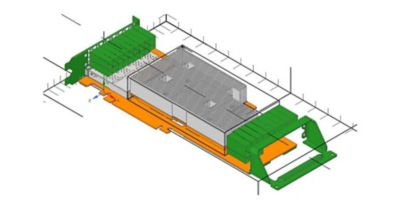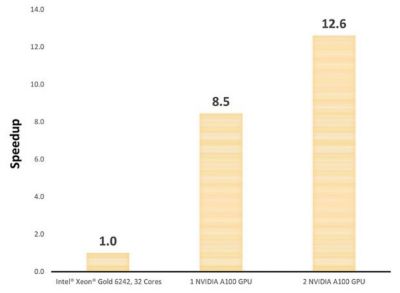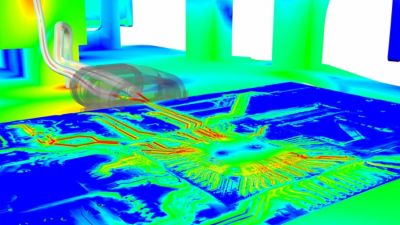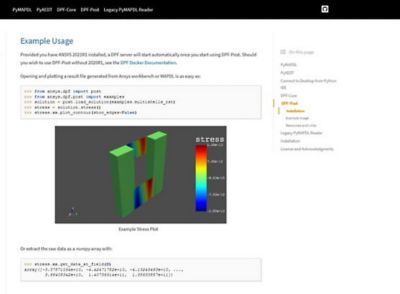-
-
学生向け無料ソフトウェアにアクセス
Ansysは次世代の技術者を支援します
学生は、世界クラスのシミュレーションソフトウェアに無料でアクセスできます。
-
今すぐAnsysに接続!
未来をデザインする
Ansysに接続して、シミュレーションが次のブレークスルーにどのように貢献できるかを確認してください。
国および地域
無料トライアル
製品およびサービス
リソースとトレーニング
当社について
Back
製品およびサービス
ANSYS BLOG
November 17, 2022
To Go Far, Go Together
The philosophy of an open ecosystem has driven the Global Partnerships team at Ansys for many years. Modern computer-aided engineering (CAE) tools and workflows are the result of strong collaborations between the companies that build the constituent parts. From long-standing titans in the software, hardware, and cloud computing industries to up-and-coming players developing breakthroughs in machine learning, health care, and sustainability, Ansys is securing and growing partnerships to give potential customers the confidence to take a “leap of certainty” to include simulation in the way they create products in the digital age.
There is a saying, commonly attributed as an African proverb, that concisely illustrates a universal truth: “If you want to go fast, go alone; if you want to go far, go together.” Building on that foundation, partners play a critical role in helping Ansys deliver best-in-class simulation workflows. In addition to the tremendous success and growth of the Academic and Startup ecosystems, the near-doubling of the Technology Partner ecosystem membership since 2017 reflects the value that partners are recognizing and reinforces Ansys’ core mission of empowering customers to design and deliver transformational products.
The open ecosystem undergirds the partner team’s focus of driving customer value and scale. For Ansys, a partnership may exist for many reasons, but chief among these are filling capability gaps in our offerings and extending the overall Ansys CAE ecosystem. By making tools available on demand via major cloud platforms and improving simulation workflows through more seamless integrations, partners are essential to enabling Ansys to deliver true business value to our mutual customers.
Ansys Technology Partner Program
Our global partner community includes more than 350 Technology Partners. These partners provide highly specialized software products, high-performance computing (HPC), and cloud hosting services that complement Ansys solutions with leading products and services in a variety of industries. The new Technology Partner Program offers four tiers of membership for the community. Each tier has its own set of benefits and requirements, and partners can rise from one tier to the next by meeting certain thresholds of product integration and mutual customer success.
The program is designed to provide partners with the tools and resources needed to connect our respective technologies, drive growth, and deliver customer value. As program members, Technology Partners gain market visibility via promotion of their solution to Ansys customers and are eligible for marketing and sales collaboration based on their program tier and joint strategy with Ansys. It is this collaboration that paves the way for the design workflows that are catalyzing the next generation of technological breakthroughs.
Ansys and EMA: Tackling Server EMI
In the electronics industry, electromagnetic interference (EMI) is a growing issue with the increasing speed and density of components in modern devices. At Intel, engineers were looking to predict the interference produced across a whole server. This required the power of electromagnetics workhorses Ansys HFSS and Ansys SIwave in combination with the functionality of Ansys EMA3D Cable software from our partner Electro Magnetic Applications (EMA).
Over a two-year period, Ansys and EMA worked closely with Intel to modify EMA3D Cable to improve meshing speed and add a subgrid capability to increase resolution for specific device subcomponents. Once the fields were imported from HFSS and SIwave, these enhancements to EMA3D Cable enabled Intel to simulate the cabling and thin wiring within a server’s enclosure. This joint effort now enables Intel’s signal integrity engineers to simulate all six cards in a server at once, as compared to previous efforts that required simulation of a single card six different times. With this new workflow, the Intel team can understand and solve EMI issues at the design stage before observing them in the lab, further demonstrating the value of tool integration to solve complex problems.

Interior of a peripheral component interconnect express (PCIE) module with sub-grid defined in the heat sink area. Without a subdomain enabling finer mesh only in specific regions, Intel engineers would spend far more compute time to simulate an entire server.
Ansys and NVIDIA: Faster Simulation, Lower Hardware Cost
On the hardware side, Ansys and NVIDIA have collaborated for many years to ensure that customers have the most efficient performance for running large simulations by parallelizing the computations. Indeed, customers can benefit from the power of NVIDIA’s graphics processing units (GPUs) to accelerate simulation across the board in structural, fluid, and electromagnetic analyses. For fluids simulation in particular, GPU acceleration was first made available in Ansys Fluent in 2014 with the introduction of NVIDIA’s AmgX solver, which greatly enabled speedups for certain classes of problems. However, before this year, the entire Fluent code was not optimized to run fully on GPUs.

External aerodynamic benchmark results on a multi-GPU solver
With NVIDIA’s recent advances in their GPU hardware and tool kits, their creation of dedicated program languages has given developers the tools to better architect fluids solver modules for GPUs. The desire to unleash the full power of GPU acceleration helped push Ansys to release a new multi-GPU solver in Fluent in 2022. Using the new solver, exponential speedups can be achieved running even a single NVIDIA A100 Tensor Core GPU as compared to multicore CPU clusters. Such performance gains are just one benefit, as our studies have shown that engineers who run their fluids simulations on GPUs can reduce hardware costs by up to 7X and power consumption by up to 4X. These cost savings can help customers meet their long-term sustainability goals.

Speedup for different configurations of central processing unit (CPU) and NVIDIA A100 GPUs
Ansys and Microsoft: Boosting Chip Development
To meet the continuous demand from consumers for high-performance electronics, the devices themselves continue to become physically smaller or pack more features into the same footprint. Radio-frequency integrated circuits (RFICs) have become key enablers of these technologies by making it possible to integrate most of the necessary electronic components into a single chip. High-fidelity simulations for the electrical properties of full RFIC designs, however, have been a struggle for chip manufacturers due to computational complexity and meshing limitations.

Ansys HFSS simulation of a radio-frequency integrated circuit (RFIC) employing the Mesh Fusion feature at chip, package, and printed circuit board (PCB) levels using Ansys Cloud Direct on Microsoft Azure.
In partnership with Microsoft, Ansys Cloud Direct enables IC designers to solve an adaptively converged mesh in HFSS for an entire RFIC by using hundreds of compute cores on Microsoft Azure. By offering designers access to what is effectively an “on-demand supercomputer” through a simple GUI, cloud computing on Azure makes it possible for engineers to get the highest level of accuracy faster than ever before. For manufacturers, this could mean avoiding the kinds of mistakes or product delays that could cost them millions of dollars in additional R&D time and future revenue.
Looking Ahead
The year 2022 has been a dynamic one for the Global Partnerships team. Ansys has achieved some notable successes by working closely with partners across the ecosystem of software, hardware, and cloud providers. In addition to the stories highlighted here, we also recognized several other partners with awards for their outstanding contributions at our second annual Technology Partner Day, held in conjunction with Ansys’ Simulation World event in May.
As we look for the next “big bet” integrations, we will continue to evolve our partner community to drive further adoption of CAE simulation. This includes the PyAnsys project to catalyze a Python developer ecosystem that will extend Ansys solutions, and to ensure that all Ansys tools are accessible on the cloud platforms that are important to our customers. Together with our partners, these steps will be made with confidence.

Stress plot example shown on the PyAnsys GitHub documentation site.
